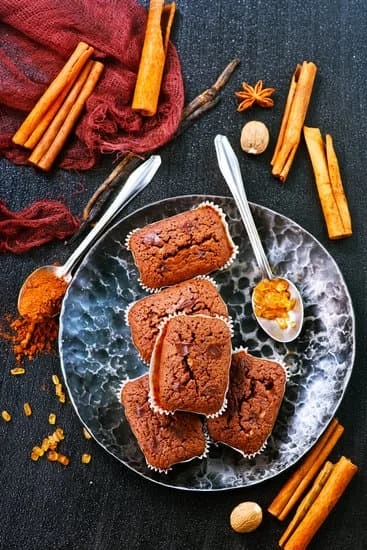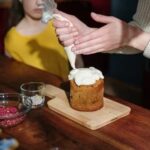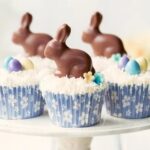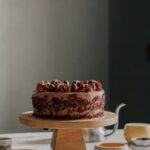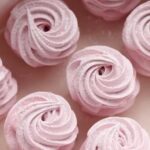Piping in cake decorating is a fundamental technique that involves using a piping bag and different tips to create intricate designs, patterns, and textures on cakes. This skill allows bakers and decorators to personalize their creations with beautiful borders, flowers, letters, and more. Understanding what piping is and why it’s important can significantly enhance the overall appearance of a cake, turning it into a work of art.
Mastering piping techniques opens up a world of creative possibilities in cake decorating. From simple lines and dots to intricate lace patterns and elaborate floral arrangements, the types of piping designs you can achieve are limitless. Whether you’re a beginner looking to learn the basics or an experienced baker wanting to expand your skills, exploring different styles and designs will take your cake decorating to the next level.
To successfully execute piping in cake decorating, having the right tools and equipment is crucial. From piping bags and couplers to various tips for creating different shapes and effects, understanding how each tool contributes to the overall outcome is essential for achieving professional-looking results. In the following sections, we will delve deeper into the types of piping techniques, essential tools needed for beginners, as well as tips for selecting the right piping tips based on desired designs and textures.
Types of Piping Techniques
Piping techniques in cake decorating are essential skills that allow bakers and decorators to create intricate designs, patterns, and textures on cakes and other baked goods. These techniques involve using a piping bag filled with frosting or icing to pipe out various shapes, lines, and embellishments. Whether you’re a beginner looking to learn the basics or an experienced decorator wanting to expand your repertoire, mastering different piping techniques can elevate your cakes to the next level.
One of the most common piping techniques is creating borders around the edges of cakes or cupcakes. This can be done using a round piping tip to create simple dots or beads, a star tip for rosettes or shells, or a petal tip for delicate floral designs. Borders not only add visual appeal but also help define the overall look of the cake.
Another popular piping technique is writing or lettering on cakes. This requires good control over the piping bag and a steady hand to pipe out clean and legible letters or words. Different tips can be used to achieve varying lettering styles, from elegant scripts to bold block letters. Practice and patience are key when it comes to mastering this skill.
Creating intricate patterns and designs with piping involves using different tips, pressure control, and hand movements. From lacework and filigree designs to basketweave patterns and intricate scrollwork, the possibilities are endless when it comes to decorating cakes with piping techniques. Experimenting with different tips and techniques will help you discover your personal style and develop your creativity in cake decorating.
| Piping Technique | Description |
|---|---|
| Borders | Create decorative edges on cakes or cupcakes using various piping tips |
| Writing/Lettering | Pipe out letters or words on cakes with different tips for unique styles |
| Intricate Designs | Create elaborate patterns like lacework, basketweave, or scrollwork with diverse tips |
Essential Piping Tools and Equipment
Piping is a fundamental skill in cake decorating that involves using a piping bag and various tips to create intricate designs, borders, and textures on cakes, cupcakes, and other baked goods. To master piping effectively, beginners need to have the essential tools and equipment at their disposal. Some of the basic tools required for piping include piping bags, couplers, and piping tips.
Piping bags are either reusable or disposable and come in different sizes to accommodate various amounts of frosting. Couplers are essential for easily changing the piping tips without having to switch out the entire bag of frosting. Piping tips come in a wide range of shapes and sizes, each serving a unique purpose in creating different decorations such as stars, shells, rosettes, leaves, and more.
For beginners looking to start their cake decorating journey with piping, investing in a set of basic piping tools is crucial. These tools not only make the decorating process more manageable but also allow for creativity and versatility in design. As beginners practice their piping skills, they can gradually expand their collection of tools to include more specialized tips for advanced techniques.
| Piping Tools | Description |
|---|---|
| Piping Bags | Available in reusable or disposable options |
| Couplers | Allow for easy tip changes without switching out the bag |
| Piping Tips | Come in various shapes and sizes for creating different designs |
Choosing the Right Piping Tips
Piping tips are essential tools in cake decorating that can significantly impact the final look and design of your baked creations. These small, metal tips come in a variety of shapes and sizes, each serving a specific purpose in creating different designs and textures on cakes, cupcakes, cookies, and more. Understanding how to choose the right piping tips is crucial for achieving the desired outcome in your cake decorating projects.
When selecting piping tips for your cake decorating endeavors, consider the following factors:
- Tip Size: The size of the tip will determine the width of the piped design. Larger tips create bolder decorations, while smaller tips are ideal for intricate details.
- Tip Shape: Piping tips come in various shapes, such as round, star, petal, leaf, and more. Each shape lends itself to specific designs like flowers, borders, writing, and other embellishments.
- Material: Piping tips are typically made of stainless steel or plastic. Stainless steel tips are durable and produce cleaner lines, while plastic tips are more affordable but may not provide the same level of precision.
It’s essential to have a variety of piping tips in your collection to be able to execute a wide range of designs and textures. Experimenting with different tip combinations and techniques will help you develop your piping skills and create unique decorations that stand out.
Whether you’re a beginner or an experienced cake decorator, choosing the right piping tips is key to achieving professional-looking results. By investing in high-quality piping tips and practicing with different designs and textures, you can elevate your cake decorating skills and impress your friends and family with beautifully decorated treats. Mastering the art of selecting piping tips opens up endless possibilities for creativity in cake decorating projects.
Piping Consistencies
What Is Piping Consistency?
When it comes to cake decorating, piping consistency refers to the texture and thickness of the icing or frosting being used for piping. Having the right consistency is crucial in creating clean lines, intricate designs, and beautiful decorations on your cakes. Different piping techniques require different consistencies to achieve the desired results.
Importance of Piping Consistency
The importance of having the right piping consistency cannot be emphasized enough in cake decorating. If the icing is too thin, it will not hold its shape and will result in a sloppy, messy design. On the other hand, if the icing is too thick, it will be difficult to pipe and can lead to uneven lines and patterns. Achieving the perfect consistency ensures that your decorations look professional and polished.
Tips for Achieving the Right Piping Consistency
To ensure that you have the right piping consistency for your cake decorating projects, here are some tips to keep in mind:
- Start with a base consistency for your icing or frosting and adjust as needed by adding more liquid (such as water or milk) for a thinner consistency or more powdered sugar for a thicker consistency.
- Test your piping consistency by practicing on a piece of parchment paper before decorating your actual cake.
- Remember that different piping techniques may require different consistencies, so be prepared to adjust accordingly.
By paying attention to the piping consistency and making necessary adjustments, you can elevate your cake decorating skills and create stunning designs that will impress everyone who sees them.
Common Piping Mistakes and How to Avoid Them
Piping in cake decorating is a technique that involves using a piping bag filled with frosting to create various designs, shapes, and textures on cakes and other baked goods. While piping can elevate the overall look of a dessert, it can also be tricky for beginners. Making mistakes while piping is part of the learning process, but knowing how to avoid common errors can help you perfect your skills and achieve beautiful results.
Here are some common piping mistakes that beginners often make, along with tips on how to avoid them:
1. Inconsistent Pressure: One of the most common mistakes in piping is applying inconsistent pressure on the piping bag, resulting in uneven lines or shapes. To avoid this, practice controlling the pressure on the bag by squeezing gently and consistently while piping.
2. Air Bubbles: Another common issue is getting air bubbles trapped in the frosting, which can cause splatters or interruptions in your design. To prevent air bubbles, make sure to eliminate any excess air from the bag before starting to pipe by gently squeezing out a small amount of frosting.
3. Messy Borders: Creating clean and precise borders can be challenging for beginners. To avoid messy borders, make sure to keep a steady hand while piping and practice consistent movement around the edges. You can also use a template or guide to help you create even lines.
By being aware of these common piping mistakes and following these tips, you can improve your skills and confidently create beautifully piped designs on your cakes and desserts. Remember that practice makes perfect, so don’t be discouraged if you make mistakes along the way – just keep practicing and experimenting with different techniques until you master the art of piping in cake decorating.
Advanced Piping Techniques
Creating 3D Designs
One way to elevate your cake decorating skills is by mastering the art of creating 3D designs using piping techniques. This advanced technique involves piping layers of frosting to create intricate shapes and patterns that pop out from the cake’s surface. Whether it’s flowers, animals, or intricate borders, 3D piping designs add a stunning visual element to your cakes and showcase your artistic abilities.
Brush Embroidery
Brush embroidery is a technique that adds delicate and elegant details to your cakes through piping. By using a small brush to create soft textures and feather-like strokes on piped frosting, you can achieve a beautiful embroidered look on your cakes. This detailed technique requires patience and precision but can result in stunning floral patterns, lace designs, or even whimsical landscapes on your cakes.
Geometric Patterns
Geometric patterns have become increasingly popular in cake decorating, offering a modern and chic aesthetic to baked creations. Mastering piping techniques for creating geometric shapes like chevrons, stripes, triangles, or hexagons can add a sophisticated touch to your cakes. By combining different piping tips and playing with color contrasts, you can achieve eye-catching geometric designs that will impress any audience.
By exploring these advanced piping techniques and experimenting with different styles and designs, you can take your cake decorating skills to the next level. Whether you’re aiming for intricate 3D creations, delicate brush embroidery details, or modern geometric patterns, mastering these advanced techniques will set you apart as a skilled cake decorator.
Keep practicing, refining your skills, and pushing the boundaries of what is possible with piping in cake decorating to unleash your creativity and wow your friends and family with beautifully decorated cakes.
Piping Ideas and Inspiration
Piping in cake decorating is a versatile technique that allows bakers and decorators to add intricate designs, patterns, and textures to their creations. Beyond the traditional use of piping for borders and writing, there are numerous creative ways to incorporate piping into your cake designs. One popular technique is creating floral decorations using different piping tips to achieve various petal shapes and sizes. These delicate flowers can be used to adorn wedding cakes, birthday cakes, or any special occasion cake.
Another creative way to utilize piping in cake decorating is by incorporating sculptural elements into your designs. By using a stiffer consistency icing and a small round tip, you can create three-dimensional structures such as bows, ribbons, or even figurines. These sculptural elements can add depth and visual interest to your cakes, making them truly stand out.
Furthermore, experimenting with different colors and textures through piping can take your cake decorating skills to the next level. By blending different shades of icing or using edible glitters and dusts, you can create unique ombre effects or metallic finishes on your cakes.
Additionally, combining piping techniques with other decorative elements like fondant accents or edible paints can result in truly show-stopping creations. The possibilities are endless when it comes to using piping in cake decorating, allowing you to unleash your creativity and imagination in every sweet creation.
Conclusion
In conclusion, mastering the art of piping in cake decorating opens up a world of creativity and endless possibilities. Understanding what is piping in cake decorating is just the beginning of a journey towards creating stunning and delicious masterpieces. By exploring the different types of piping techniques, essential tools, and tips for achieving various designs and textures, one can elevate their cake decorating skills to new heights.
Piping consistency plays a crucial role in achieving professional-looking results, emphasizing the importance of practice and precision. It is essential to familiarize yourself with common piping mistakes and learn how to avoid them in order to perfect your skills. With dedication and patience, you can overcome any challenges that may arise along the way and continue to improve your craft.
For those looking to push the boundaries of their cake decorating abilities, experimenting with advanced piping techniques can lead to extraordinary creations. Drawing inspiration from various sources and incorporating unique ideas into your designs will further showcase your talent. Remember that the key to success lies in practice, perseverance, and a passion for creating beautiful works of edible art through piping.
Frequently Asked Questions
What Is Piping a Cake?
Piping a cake refers to the technique of using a pastry bag and a piping tip to decorate a cake with frosting or icing. It allows you to create intricate designs, borders, and lettering on the surface of the cake, adding both visual appeal and texture.
What Is the Easiest Piping Tip for Beginners?
The easiest piping tip for beginners is usually a round tip or a star tip. These tips are versatile and forgiving, making it easier for beginners to practice piping techniques without getting frustrated. With these tips, you can create simple but beautiful designs on your cakes.
What Can I Use to Pipe a Cake?
There are various tools that you can use to pipe a cake, including pastry bags, piping tips, couplers, and decorating combs. Pastry bags come in different materials like plastic and cloth, each offering different levels of flexibility and control. Piping tips also come in different shapes and sizes, allowing you to create different decorative effects on your cakes.
Couplers are handy for changing tips without needing to change the pastry bag. Lastly, decorating combs help create textured designs on the sides of cakes for added flair.

Welcome to our cake decorating blog! My name is Destiny Flores, and I am the proud owner of a cake decorating business named Cake Karma. Our mission is to provide delicious, beautiful cakes for all occasions. We specialize in creating custom cakes that are tailored specifically to each customer’s individual needs and tastes.

